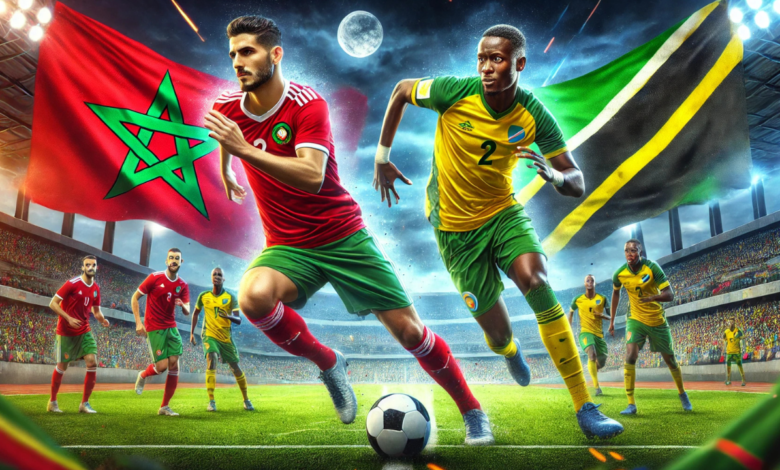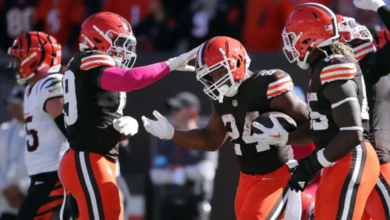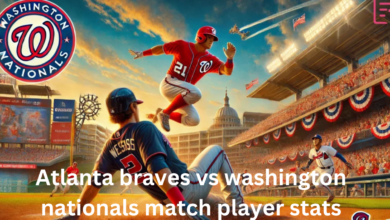Morocco vs Tanzania: A Comprehensive Comparison of Football Rivalries

Regarding African football, few rivalries have been as engaging and historically significant as Morocco vs Tanzania. Both teams have distinct footballing traditions and have made their mark on the international stage in various competitions, from the Africa Cup of Nations to World Cup qualifiers. This article will comprehensively compare these two nations in the football world, highlighting key aspects of their rivalries, historical performances, tactical approaches, and the players who have shaped these teams over the years.
Historical Background: Morocco vs Tanzania
The history of Morocco vs Tanzania and Tanzania in African football is a tale of contrasting paths. Morocco, with a more established footballing pedigree, has been a dominant force in African football, with frequent appearances in continental tournaments and World Cups. Their national team, the Atlas Lions, is known for its technical skills, strong defence, and tactical discipline. Morocco’s football history dates back to the 1950s, and they have been a part of several successful campaigns, including their remarkable World Cup qualification in 1970 and 1986, where they made it to the knockout stages.
Tanzania, on the other hand, has had a more modest footballing history. Their team, the Taifa Stars, has not enjoyed the same success as Morocco but has gradually made progress in recent years. Tanzania’s football journey began with an emphasis on regional competitions, where they faced off against their East African neighbours. Despite facing challenges regarding resources and infrastructure, the Taifa Stars have developed a strong football culture, especially in the domestic leagues, and their performances have started to improve on the continental level.
Head-to-Head Record
Regarding direct encounters, Morocco and Tanzania have met in various competitions, but the results have somewhat favoured Morocco. Historically, Morocco has won most of their matchups, often displaying superior tactical play and experience on the international stage. However, Tanzania has held its ground occasionally, and their encounters have usually been competitive.
One of the most notable matchups between the two teams occurred during the Africa Cup of Nations (AFCON) qualifiers, where Morocco secured a vital win. However, Tanzania has made significant strides in recent years, and their encounters have become more evenly matched, showcasing the rise of Tanzanian football.
While Morocco has generally been the dominant force in their clashes, Tanzania has shown resilience and a strong desire to prove itself against more established African footballing powers. Their rivalry continues to evolve, and with the growing competitiveness of Tanzanian football, it promises to be one to watch in the future.
Footballing Styles: Morocco vs Tanzania
Morocco and Tanzania have unique play styles deeply rooted in their footballing cultures.
Morocco’s Style of Play
Morocco is known for its technical football, characterized by fast ball movement, short passes, and a well-organized defence. The Atlas Lions tend to dominate possession, controlling the game’s tempo through midfield play and utilizing the width of the pitch. They emphasize ball control and rely on skilful wingers to create goal-scoring opportunities.
In attack, Morocco is known for quick counterattacks and exploiting spaces left by their opponents. Their forwards are typically fast and versatile, making them a dangerous threat on the break. The team’s solid defensive unit is another key feature, with a well-coordinated backline and a strong goalkeeper.
Tanzania’s Style of Play
Conversely, Tanzania has traditionally relied on a more physical and direct style of play. Their approach tends to focus on long balls and quickly getting them to their attackers. While the Taifa Stars have improved their technical abilities, they often play more pragmatically, relying on strength, stamina, and a solid defensive structure.
Over the years, Tanzania has incorporated more passing play into their system, especially under modern coaching. However, their style remains relatively conservative, emphasizing strong defensive organization and disciplined midfield work.
Key Players: Morocco vs Tanzania
Morocco and Tanzania have produced standout players who have significantly contributed to their team’s successes.
Morocco’s Key Players
Morocco’s national team has boasted some world-class players over the years. The most famous is Hakim Ziyech, the Chelsea winger who has been a key player for the Atlas Lions in recent years. Ziyech’s creativity, dribbling skills, and ability to deliver precise crosses make him one of Morocco’s most dangerous offensive threats.
Other notable players include Achraf Hakimi, a right-back who plays for Paris Saint-Germain and is known for his pace and attacking contributions, and Yassine Bounou, the team’s goalkeeper who has earned praise for his performances with Sevilla in La Liga. These players, among others, form the backbone of the Moroccan team and are critical to their continued success on the continental and global stage.
Tanzania’s Key Players
Tanzania has seen the rise of several key players, even though they haven’t achieved the same level of international fame as some of their Moroccan counterparts. Mbwana Samatta, a striker who has played for top clubs in Europe, including Aston Villa in the English Premier League, is one of the standout figures for Tanzania. His leadership and goal-scoring ability have been crucial for the Taifa Stars.
Other notable players include Farouk Shikalo, the goalkeeper who has played a key role in Tanzania’s defensive setup, and Jonas Mkude, a midfield dynamo who brings energy and vision to the team. While not as well-known as some of Morocco’s players, these individuals have played key roles in Tanzania’s football development.
Tactics and Coaching: Morocco vs Tanzania
Morocco’s Coaching Philosophy
Morocco’s footballing success can largely be attributed to their top-tier coaching. Over the years, Morocco has had a mix of experienced coaches, many of whom have experience in European football. Coaches like Hervé Renard, who led Morocco to a successful AFCON 2015 campaign with Zambia, have instilled a sense of discipline and tactical flexibility in the team.
The Moroccan Football Federation’s investment in coaching and development programs has allowed the Atlas Lions to thrive internationally. Their tactical approach focuses on balance, ensuring that the team can defend resolutely while posing a threat in attack.
Tanzania’s Coaching Evolution
Under various coaches, Tanzania has also made significant strides in improving its tactical approach. Their coaching staff has emphasized a pragmatic style of play, focusing on defensive solidity and counterattacking opportunities. Recent developments in Tanzanian football have seen a move toward more possession-based play, with coaches encouraging players to be more confident with the ball.
While Tanzanian coaches have often worked with limited resources, their development programs have helped improve the players’ technical ability and foster a stronger team ethos.
Recent Performances and Rivalry Significance
Morocco and Tanzania have shown considerable progress in recent years, particularly in their performances in the Africa Cup of Nations. Morocco has been a constant contender, regularly advancing to the tournament’s later stages. While not as successful in advancing far in AFCON, Tanzania has made steady progress and gained respect for their performances.
The rivalry between the two teams has grown more competitive, especially with the rise of younger players in both nations. As Tanzania continues to develop, the possibility of an upset in future encounters becomes more realistic, adding an exciting element to the rivalry.
Conclusion
The rivalry between Morocco and Tanzania in African football is filled with contrasting styles, rich histories, and passionate fans. While Morocco has long been considered a powerhouse in African football, Tanzania has steadily worked towards closing the gap, and their recent performances show that the gap is narrowing. The competitive nature of their encounters promises exciting football for years to come, with both teams looking to make a mark in future African competitions and on the world stage.
FAQs
1. What is the historical head-to-head football record between Morocco and Tanzania?
Morocco has traditionally had the upper hand in their encounters with Tanzania, winning most of their matchups. However, Tanzania has shown resilience, making recent encounters more competitive.
2. How does Morocco’s style of play differ from Tanzania’s?
Morocco is known for its technical, possession-based play, while Tanzania traditionally plays a more physical, direct game emphasizing defensive solidity.
3. Who are some of Morocco’s most notable football players?
Morocco’s key players include Hakim Ziyech, Achraf Hakimi, and Yassine Bounou, all of whom have played vital roles in its success on the international stage.
4. Which players are considered key figures for Tanzania?
Mbwana Samatta, Farouk Shikalo, and Jonas Mkude are some of Tanzania’s standout players, contributing significantly to the team’s development.
5. How have both teams performed in the Africa Cup of Nations?
Morocco has consistently been a strong contender in AFCON, often advancing to the later stages, while Tanzania has been less successful but has shown steady improvement.
You May Also Read: https://usabestweekly.com/rublev-tennis/




